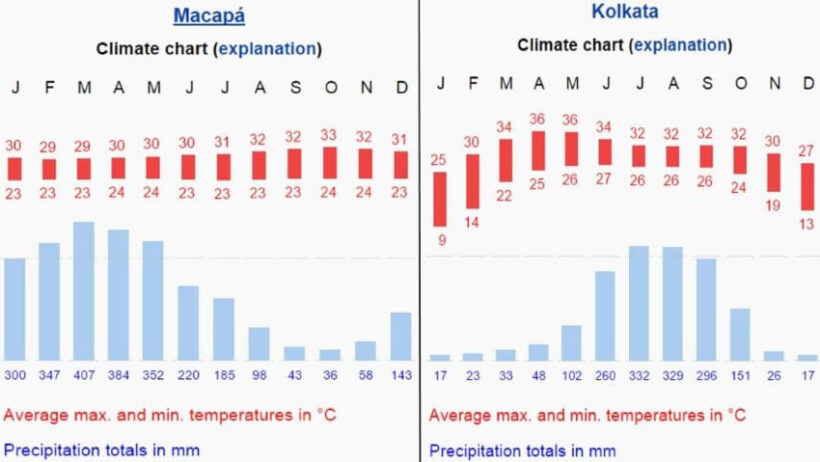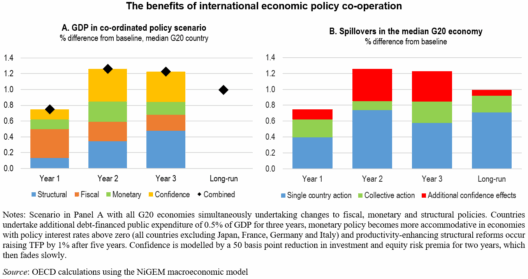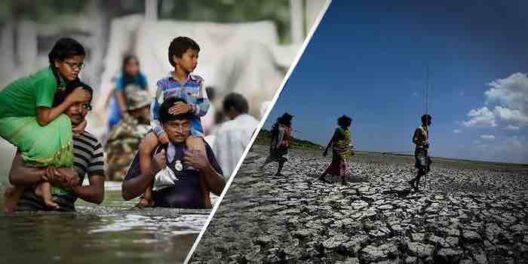The tropical monsoon climate is a distinctive atmospheric phenomenon that emerges predominantly in specific regions near the equator. Characterized by pronounced wet and dry seasons, this climate type creates a unique environmental tapestry that influences ecosystems, agriculture, and human habitation. Understanding tropical monsoon climate is crucial as it offers insights into the broader implications of climate variability and change.
At its core, the tropical monsoon climate, classified under the Köppen climate classification as Aw or Am, is defined by significant seasonal differences in rainfall, which are chiefly governed by the shifting patterns of the Intertropical Convergence Zone (ITCZ). During the monsoon season, heavy precipitation occurs as moist air masses are drawn inland from surrounding oceanic bodies. This subsequent downpour fundamentally supports the lush biodiversity, particularly within monsoon forests, which comprise a hallmark of this climate.
In stark contrast, the dry season—often extending from several months to half a year—reveals a different side of this climate. This period is typically marked by high temperatures and diminished humidity, leading to a stark transformation in the landscape. Grasses and trees shed leaves to adapt to the aridity. The adaptive strategies of flora and fauna during these dry spells highlight the resilience woven into the ecological fabric of such regions.
Geographically, tropical monsoon climates are primarily found in South Asia, Southeast Asia, and parts of West Africa. Countries like India, Bangladesh, Thailand, and Vietnam rely heavily on the seasonal rains brought about by the monsoon winds. These seasonal rains are often seen as a double-edged sword; while they bestow necessary sustenance to crops, they can also unleash the fury of floods, significantly impacting human settlements.
Intriguingly, the dynamics of the monsoon are not solely atmospheric. They intertwine with various factors such as topography and oceanic currents, complicating predictions around monsoon patterns. Areas situated at higher elevations, like the Western Ghats in India, receive significantly higher rainfall due to the orographic lift—the phenomenon where moisture-laden winds are forced to rise over mountains, cooling and condensing in the process.
The intensity and duration of the monsoon can fluctuate significantly year-to-year, driven by patterns such as El Niño and La Niña. These oscillations can create shifts that may exacerbate drought conditions or lead to devastating floods. The increased variability in monsoonal rains due to climate change poses a serious risk, raising questions about food security and the sustainability of livelihoods dependent on agriculture.
Agriculturally, the significance of the tropical monsoon climate cannot be overstated. The seasonal rains rejuvenate the soil, making it fertile and suitable for a plethora of crops, including rice, pulses, and oilseeds. In fact, the synchronized cycles of planting and harvesting are a hallmark of agrarian societies in these regions, underscoring the deep cultural ties to the rhythm of the monsoon. Communities often celebrate the arrival of the rain, integrating it into folklore and traditions that echo through generations.
Nonetheless, the blessings of monsoon rains come accompanied by risks. Floods resulting from excessive rainfall can devastate communities, displacing thousands and destroying infrastructure. In such eventualities, the importance of robust drainage systems and emergency response plans becomes evident. The intersection of climate change with traditional monsoon patterns necessitates innovative strategies for disaster resilience, capable of accommodating unexpected fluctuations.
Interestingly, the interplay between human activity and the environment can exacerbate the challenges posed by the monsoon climate. Urbanization has led to increased impervious surfaces, which amplify flooding risk. Deforestation impacts the local water cycle, reducing moisture retention and altering precipitation patterns. Thus, proactive conservation efforts are paramount to preserve the delicate equilibrium of these ecosystems. Sustainable practices, education, and community involvement are vital to mitigate the adverse effects of anthropogenic activities.
Moreover, the tropical monsoon climate presents unique opportunities for renewable energy generation, particularly solar and wind power. As monsoon winds sweep across the landscape, they can be harnessed effectively. The expansive sunlit hours during the dry season offer a complementary facet to energy production, suggesting a potential pathway toward sustainable energy solutions that benefit both local economies and the environment.
As climate change continues to reshape weather patterns globally, understanding and adapting to the intricacies of the tropical monsoon climate becomes imperative. The shifts in rainfall patterns, temperatures, and increased frequency of extreme weather events challenge established agricultural practices and cultural norms. They compel societies to innovate and adapt in the face of unpredictability.
In conclusion, the tropical monsoon climate is more than a mere meteorological occurrence; it is a complex interlude that harmonizes nature’s rhythms with human existence. By acknowledging its multifaceted influence on ecosystems and economies, we can begin to appreciate the urgent necessity for sustainable practices and robust resilience strategies. As we look to the future, fostering curiosity about the delicate balance between nature and human enterprises will be crucial in fostering an enduring relationship with our environment.








